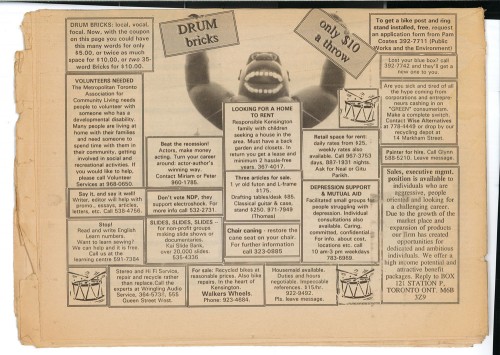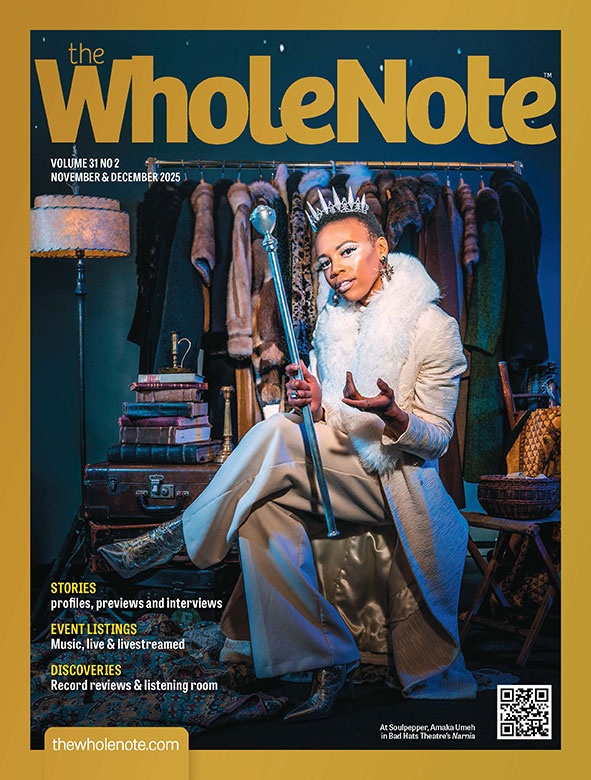 A couple of issues back (Vol 26, No 1) in this slot, I drew readers’ attention to the cheeky tagline “Priceless” on the top right hand corner of our front cover (where one would usually expect to find a newsstand price, or, failing that, the word “Free”). “But for how long? And what comes next?” was the question I asked. For what it’s worth, if you’ll be sad to see the Priceless tagline go, turn back to the cover and bid it a fond farewell.
A couple of issues back (Vol 26, No 1) in this slot, I drew readers’ attention to the cheeky tagline “Priceless” on the top right hand corner of our front cover (where one would usually expect to find a newsstand price, or, failing that, the word “Free”). “But for how long? And what comes next?” was the question I asked. For what it’s worth, if you’ll be sad to see the Priceless tagline go, turn back to the cover and bid it a fond farewell.
What will replace it? Perhaps nothing, immediately. The title of this Opener is maybe a good candidate. It captures the essence of what will need to change in our relationships with all the different constituencies within the music community who benefit in one way or another from the fact that we are around – in other words, you, our readership. We know how much you like us. But “what are we worth to you?” is a different question to grapple with – now that most of us, having slammed into an economic and social brick wall, find ourselves having to re-examine the fundamentals of how we used to ply our various trades.
“You Can’t Fake the Classifieds”
Reading Jenny Parr’s interview with Musical Stage Company’s Mitchell Marcus in this issue – especially the bit about Porchside Songs – brought to mind what I wrote here last month, after her recent death in Italy, about Kensington Market arts pioneer Ida Carnevali and her visceral understanding of how art is rooted in community. Which in turn got me thinking about another Kensington character from those days (thankfully still alive if not geographically among us), Buzz Burza.
Buzz, as we all called him, had the same neighbourhood-rooted understanding of community publishing as Ida did of community theatre, finding his way into our lives in the 1980s (by way of such landmark controlled-circulation publications as the Toronto Clarion, The Skills Exchange, and Now magazine) when we were in the early stages of founding the Kensington Market Drum. While Perlman was ranting about how the Market needed our own voice to withstand the tides of cynical change, and the onslaughts of city hall, Burza was quietly signing up dozens of businesses or agencies in and around the Market who would agree to carry the newspaper if we ever got it off the ground. “You can fake-build everything else in a community newspaper but you can’t fake the classifieds” was a favourite bon mot of his, and we took it to heart – the DRUM’s classified (DRUM HUM community ads, we called them, took the form of a brick wall across the bottom of as many pages as required, with “DRUM Bricks, only $10 a throw” as our rallying cry.
Brick by Brick
It was the same brick-by-brick approach to controlled circulation and community listings with which we built The WholeNote, from modest beginnings as a column in the Kensington Market Drum into what it was as recently as half a year ago. And, in principle, it’s the same approach – one brick at a time – that will see us (and I suspect many of you) through this next while. But we will only be as real as you help us be.
There are four brick walls (five if you count the one on this page) in this issue, each representing an aspect of what we do that can’t be faked. Check them out. They are as fundamental to what makes The WholeNote hum as unfakeable classifieds were to the Kensington Market Drum. “I’ll buy that!” is the response we’d love to hear. And they are not all monetary asks either. But they are all crucial as we rebuild our usefulness (see page 2).
Mind you, come to think of it, if you have thought about taking a subscription, for yourself or someone else, this might just be the time to consider doing so! And if you have immediate paid work to offer for musicians and other arts workers, see page 28. Till February those “bricks” are free!
publisher@thewholenote.com




